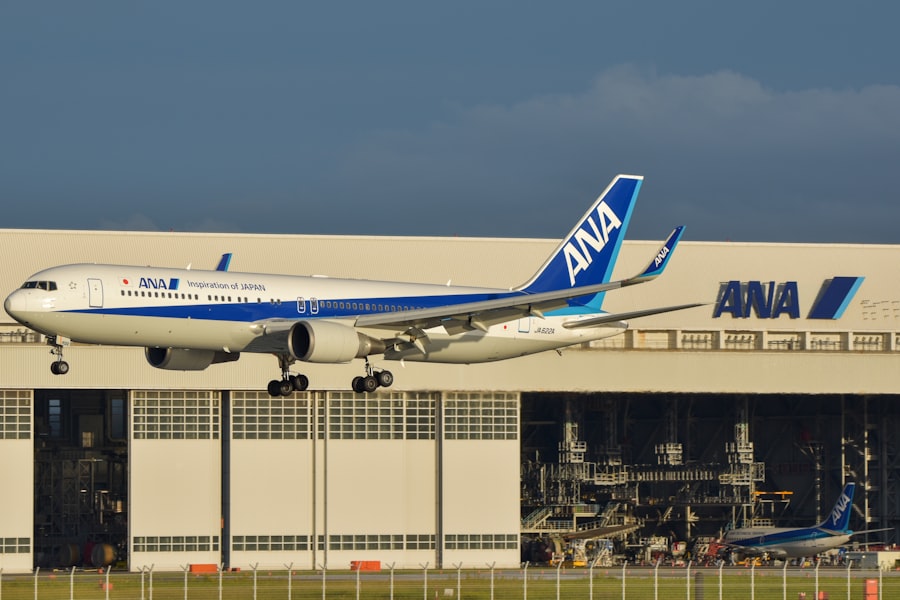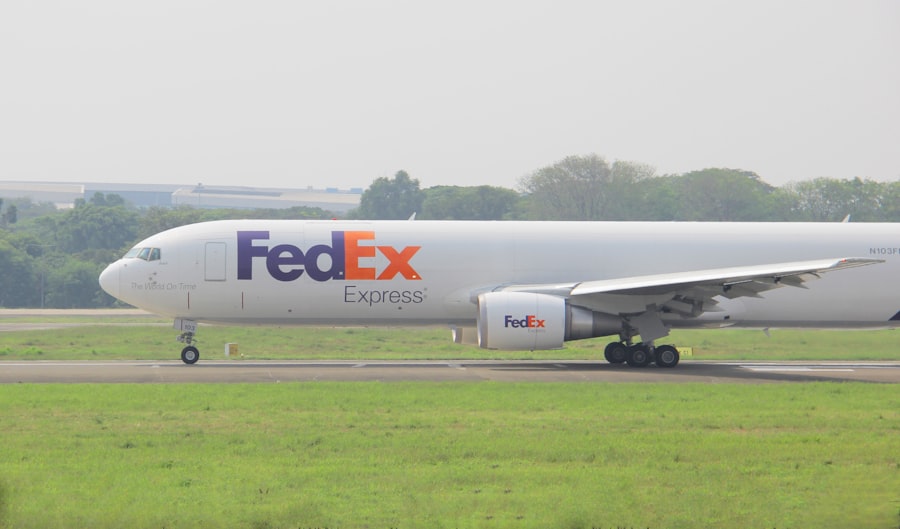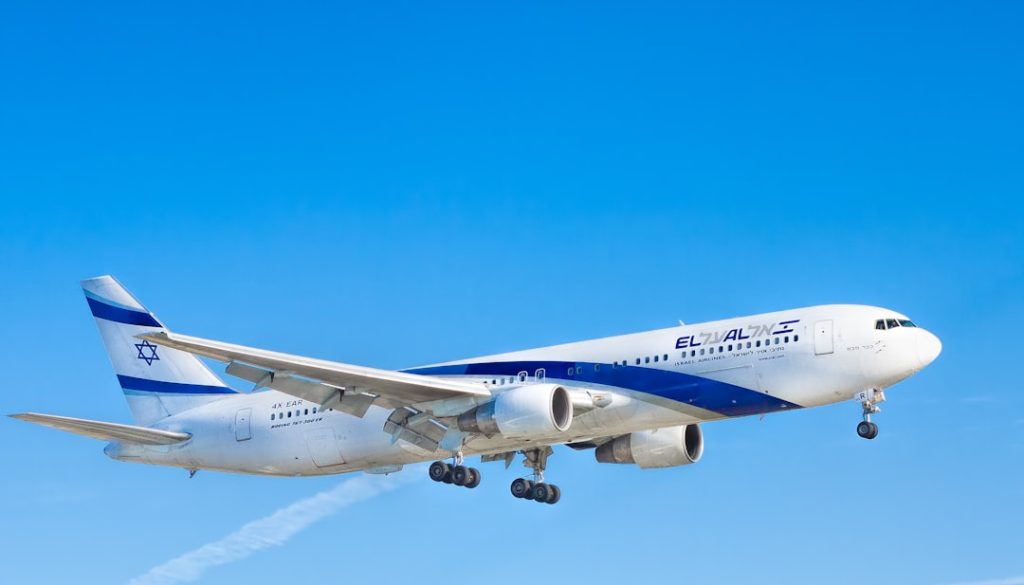The Boeing 767, a wide-body twin-engine jet, has been a significant player in the aviation industry since its introduction in the early 1980s. Designed for medium to long-haul routes, the aircraft was developed to meet the growing demand for efficient and versatile air travel. With its first flight occurring on September 26, 1981, and subsequent entry into service in 1982, the Boeing 767 quickly established itself as a reliable workhorse for airlines around the globe.
Its design features a distinctive fuselage that accommodates a wide cabin, allowing for various seating configurations and cargo options. The aircraft’s development was driven by the need for a more fuel-efficient alternative to older models, and it was one of the first commercial jets to utilize advanced materials and systems. The Boeing 767 was also notable for its fly-by-wire technology, which enhanced flight control and safety.
Over the years, the aircraft has undergone several upgrades and modifications, resulting in various models that cater to different operational needs. The versatility of the Boeing 767 has made it a favorite among airlines, cargo operators, and military organizations alike.
Key Takeaways
- The Boeing 767 is a mid- to large-size, long-range, wide-body twin-engine jet airliner.
- The Boeing 767 is widely used for commercial applications, including passenger and cargo transportation for airlines around the world.
- The Boeing 767 also serves military and government purposes, such as aerial refueling, VIP transport, and cargo missions.
- The Boeing 767 is often converted into a freighter aircraft, providing efficient cargo transportation for logistics companies.
- Specialized variants of the Boeing 767 include the KC-46 tanker, E-767 AWACS, and the Boeing 767-400ER for extended range.
Commercial Applications of the Boeing 767
In the realm of commercial aviation, the Boeing 767 has been widely adopted by numerous airlines for both domestic and international routes. Its ability to carry a substantial number of passengers—typically between 200 and 300—makes it an ideal choice for airlines looking to optimize their fleet for efficiency and profitability. The aircraft’s range, which can exceed 6,000 nautical miles depending on the variant, allows airlines to operate transcontinental flights with ease.
This capability has made it particularly popular among carriers that serve long-haul markets. Airlines have utilized the Boeing 767 in various configurations, including two-class and three-class layouts, catering to different passenger demographics. For instance, airlines like Delta Air Lines and United Airlines have employed the 767 on routes connecting major U.S.
cities with destinations in Europe and Asia. The aircraft’s spacious cabin design not only enhances passenger comfort but also allows for additional amenities such as in-flight entertainment systems and improved seating options. Furthermore, the Boeing 767’s operational efficiency translates into lower operating costs per seat mile, making it an attractive option for airlines aiming to maintain competitive pricing while delivering quality service.
Military and Government Uses of the Boeing 767

Beyond its commercial applications, the Boeing 767 has found a niche in military and government operations. The aircraft has been adapted for various roles, including aerial refueling, transport of personnel and cargo, and even as a platform for specialized missions. The military variant known as the KC-46 Pegasus is a prime example of how the Boeing 767 has been repurposed to meet defense needs.
This tanker aircraft is designed to refuel other military aircraft in flight, significantly extending their operational range and mission capabilities. In addition to its role as a refueling platform, the Boeing 767 has been utilized by government agencies for transport purposes. The U.S.
government operates modified versions of the aircraft for VIP transport, including flights for high-ranking officials and dignitaries. These specialized variants are equipped with advanced communication systems and security features to ensure safe and efficient travel. The adaptability of the Boeing 767 for military and government use underscores its versatility as an airframe capable of meeting diverse operational requirements.
Boeing 767 as a Freighter Aircraft
| Aspect | Metric |
|---|---|
| Manufacturer | Boeing |
| Variant | 767-300F |
| Maximum Payload | 52,700 kg (116,000 lb) |
| Range | 3,255 nmi (6,027 km) |
| Cargo Capacity | 24 pallets |
| Cruise Speed | 530 kn (980 km/h) |
The freighter version of the Boeing 767 has become an essential asset in the global logistics and cargo transportation industry. Known as the Boeing 767-300F, this variant is specifically designed for freight operations, featuring a large cargo door that facilitates easy loading and unloading of goods. The aircraft’s spacious main deck can accommodate a wide variety of cargo types, from standard shipping containers to oversized freight items.
This flexibility makes it an attractive option for cargo carriers such as FedEx and UPS. The efficiency of the Boeing 767 as a freighter is further enhanced by its fuel economy compared to older freighter models. With rising fuel costs impacting profitability in the cargo sector, operators have increasingly turned to the 767-300F to reduce operational expenses while maintaining high levels of service.
Additionally, its range allows for intercontinental operations, enabling cargo carriers to connect markets across vast distances without needing multiple stops. The combination of capacity, range, and efficiency has solidified the Boeing 767’s position as a cornerstone of modern air freight operations.
Specialized Variants of the Boeing 767
Throughout its production run, Boeing has developed several specialized variants of the 767 to cater to specific market needs. One notable variant is the Boeing 767-200ER (Extended Range), which offers increased fuel capacity and range compared to its predecessor. This model has been particularly popular among airlines operating long-haul routes that require additional range without compromising passenger capacity.
Another specialized version is the Boeing 767-400ER, which features a longer fuselage and improved wing design for enhanced aerodynamics. This variant is primarily used by airlines that require additional seating capacity while maintaining operational efficiency on long-haul flights. The 767-400ER has been employed by carriers such as Continental Airlines (now part of United Airlines) on transatlantic routes, showcasing its ability to meet specific operational demands.
Additionally, there are variants tailored for specific missions such as surveillance or research purposes. For example, some organizations have modified the Boeing 767 for use as an airborne early warning and control platform, equipped with advanced radar systems to monitor airspace effectively. These specialized adaptations highlight Boeing’s commitment to providing versatile solutions that meet diverse customer requirements across various sectors.
Advantages and Disadvantages of the Boeing 767

The Boeing 767 boasts several advantages that have contributed to its enduring popularity in both commercial and cargo aviation sectors. One of its primary strengths is its fuel efficiency; compared to older wide-body aircraft, the 767 consumes significantly less fuel per seat mile due to its modern engines and aerodynamic design. This efficiency translates into lower operating costs for airlines, making it an economically viable option for long-haul operations.
Another advantage is its versatility; the aircraft can be configured for various roles—passenger transport, cargo operations, or military missions—allowing operators to adapt their fleets based on changing market demands. The spacious cabin design also enhances passenger comfort, providing ample legroom and options for in-flight services that can elevate the travel experience. However, despite these advantages, there are some disadvantages associated with the Boeing 767.
One notable concern is its age; having been in service since the early 1980s, some operators face challenges related to maintenance and parts availability as newer aircraft models enter the market. Additionally, while the aircraft is generally reliable, older models may not incorporate some of the latest technological advancements found in newer jets, such as advanced avionics or more efficient engines.
Future Prospects for the Boeing 767
As aviation continues to evolve with advancements in technology and changing market dynamics, the future prospects for the Boeing 767 remain intriguing yet complex. While production of new units has ceased—Boeing officially ended production in September 2020—the existing fleet continues to play a vital role in both commercial aviation and cargo transport. Many airlines have opted to extend the service life of their Boeing 767s through retrofitting programs that enhance fuel efficiency and update cabin amenities.
Moreover, with increasing demand for air freight services driven by e-commerce growth, many cargo operators are likely to continue utilizing freighter variants of the Boeing 767 well into the future. The aircraft’s ability to efficiently transport goods over long distances positions it favorably in a market where speed and reliability are paramount. However, challenges lie ahead as airlines increasingly look towards newer models that offer even greater fuel efficiency and lower emissions.
The introduction of next-generation aircraft such as the Boeing 787 Dreamliner and Airbus A350 may lead some operators to phase out older models like the 767 in favor of these more advanced alternatives. Nevertheless, given its established reputation and ongoing demand in certain sectors, it is likely that the Boeing 767 will remain a relevant player in aviation for years to come.
The Enduring Legacy of the Boeing 767
The legacy of the Boeing 767 is marked by its significant contributions to both commercial aviation and cargo transport since its inception over four decades ago. Its innovative design features, operational versatility, and economic efficiency have made it a beloved choice among airlines worldwide. As it continues to serve various roles—from passenger transport to military applications—the aircraft stands as a testament to Boeing’s engineering prowess and commitment to meeting diverse customer needs.
While newer aircraft models may dominate headlines today, the enduring presence of the Boeing 767 in airline fleets around the world speaks volumes about its reliability and performance. As operators adapt their strategies in response to evolving market conditions, it is clear that this iconic aircraft will remain an integral part of aviation history for years to come.


